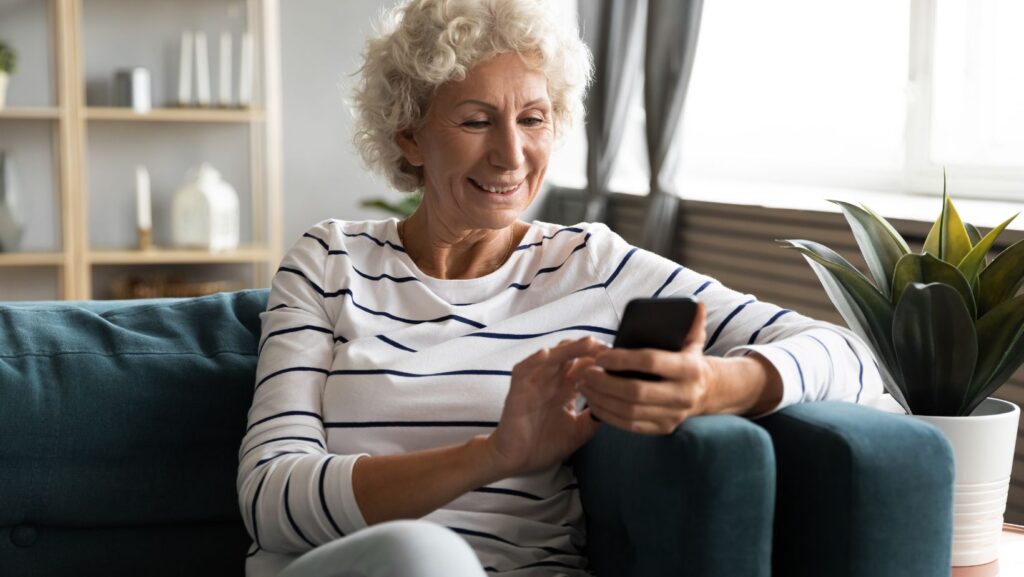In today’s fast-paced digital world, staying connected is more important than ever. However, for older adults, navigating the complex features of modern smartphones can be a daunting task. Recognizing this, manufacturers have started designing phones that cater specifically to the needs of the senior population. These devices prioritize ease of use, clear displays, and enhanced audio to ensure that staying in touch with loved ones is both simple and enjoyable.
Phones For Older People
In the current digital era, phones designed for older people play a crucial role in fostering connections and ensuring safety. These devices cater to the unique needs of seniors, combining functionality with simplicity to enhance their daily lives.
Ease of Use
 Phones for older adults prioritize ease of use, a fundamental feature that manufacturers focus on. Simplified interfaces with straightforward menus make navigation more intuitive for those who may not be familiar with the intricacies of modern smartphones. Key features include:
Phones for older adults prioritize ease of use, a fundamental feature that manufacturers focus on. Simplified interfaces with straightforward menus make navigation more intuitive for those who may not be familiar with the intricacies of modern smartphones. Key features include:
- Physical Buttons: Large, tactile buttons replace touch screens, offering a more comfortable typing experience.
- Voice Commands: Enables hands-free operation, allowing users to make calls, send texts, or set reminders without navigating through menus.
- Speed Dial: Seniors can reach their loved ones or emergency services quickly by setting up contacts on speed dial.
These features ensure that older adults can use their phones effortlessly, promoting a sense of independence.
Visibility and Display Features
Visibility and display features are vital in phones for older people, enhancing their ability to interact with the device effectively. Adjustments made to accommodate visual impairments include:
- Large Fonts: Increases readability, making texts and icons more visible.
- High-Contrast Colors: Enhances screen legibility, particularly under different lighting conditions.
- Adjustable Screen Brightness: Enables users to modify brightness levels according to their comfort, reducing eye strain.
Such modifications are essential for seniors, aiding in the prevention of frustration and ensuring a positive user experience.
Hearing Aid Compatibility
Hearing aid compatibility is a crucial consideration for phones designed for older individuals, ensuring clear audio without interference. Features that support this include:
- Telecoil Compatibility: Allows the phone’s audio to directly connect with the hearing aid, improving sound clarity.
- Adjustable Volume Controls: Users can easily adjust call volume to their hearing needs, improving communication.
- Visual Alerts: In addition to audio signals, phones offer visual alerts for incoming calls or messages, catering to those with significant hearing loss.
By incorporating these features, phones for older people significantly improve the quality of communication, fostering better connections with family and friends. This approach underscores the importance of inclusivity in technology, making it accessible and functional for users of all ages.
Key Features to Look for in Phones for Older People
Large Buttons and Displays
 Phones for older people often prioritize accessibility, ensuring that every interaction is as straightforward as possible. A crucial feature in these phones is the incorporation of large buttons and displays. Large buttons facilitate easier typing and dialing, reducing the likelihood of mistakes and making the phone more user-friendly for individuals with limited dexterity or visual impairments. Simultaneously, phones with large displays support better visibility, allowing older users to read text messages, view contacts, and navigate the phone’s menu with less strain on their eyes.
Phones for older people often prioritize accessibility, ensuring that every interaction is as straightforward as possible. A crucial feature in these phones is the incorporation of large buttons and displays. Large buttons facilitate easier typing and dialing, reducing the likelihood of mistakes and making the phone more user-friendly for individuals with limited dexterity or visual impairments. Simultaneously, phones with large displays support better visibility, allowing older users to read text messages, view contacts, and navigate the phone’s menu with less strain on their eyes.
Manufacturers of phones designed for older adults commonly integrate high-contrast colors and adjustable font sizes to further enhance readability and ease of use. Such design choices not only cater to the visual needs of seniors but also contribute to a more engaging and less frustrating user experience. By emphasizing these visual and tactile usability enhancements, phones for older people stand as exemplary tools that promote inclusivity and independence in the digital age.
Top Smartphones for Older Users
In the realm of technology tailored for the mature demographic, certain smartphones stand out for their user-friendly design and features that align with the needs of older people. These devices prioritize accessibility, integrating large buttons and displays, voice commands, and hearing aid compatibility. Additionally, they offer high-contrast colors and adjustable font sizes to ensure content is easily readable. Such smartphones not only foster independence but also enhance connectivity and safety for older users, making them a prime choice in the digital age.

